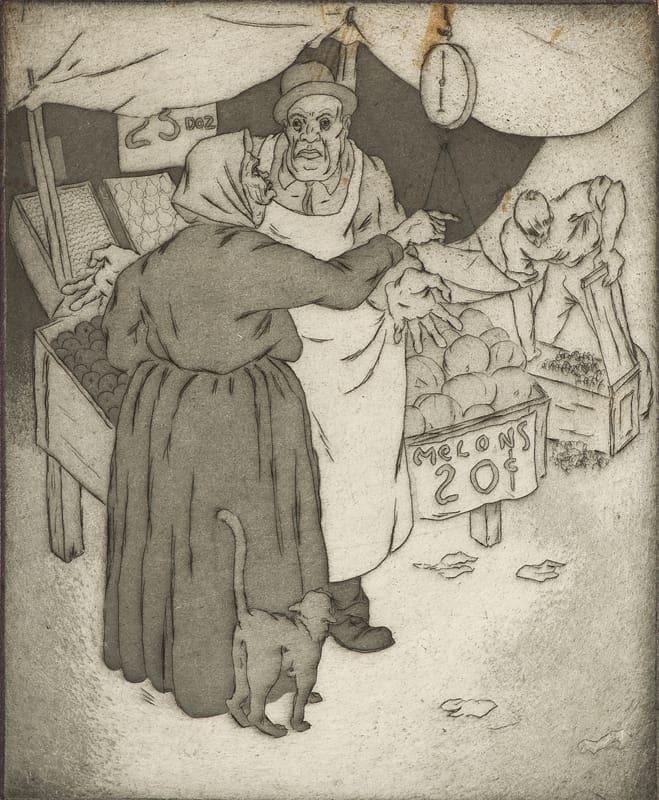Leroy W. Flint
In this scene from the Great Depression, a street vendor selling melons, pears, and other fruit contends with a dissatisfied customer. Her outstretched finger implies a request, while his open palms suggest that he cannot be of assistance. Amid economic hardship, perhaps both will go away unsatisfied.
Leroy W. Flint was a guiding force within the Akron art scene. From 1950 to 1965 he taught at the Akron Art Institute (a precursor to the Akron Art Museum), and he served as director for the last nine of those years. Before that, however, he participated in the Works Progress Administration’s Federal Art Project (WPA/FAP), which employed thousands of artists and provided them with economic relief during the Depression. Support from the WPA allowed Flint to complete a variety of murals and prints, including this one, which seems to reflect his experience of the period.
What visual features does Flint use to tell you about the people in this scene—to show their personalities or what they are feeling in the moment that he depicted? Do you think he wanted you to side with either the fruit seller or the customer in their unfolding argument?
A number of artists represented in the Akron Art Museum collection created prints with support from the Cleveland chapter of the WPA. In addition to Flint, these include Frank Daniel Fousek, Kálmán Kubinyi, and Russell T. Limbach. Flint pursued a variety of techniques as a printer, but many of his etchings share the thick, black lines seen in Market. In this particular case he combined the strong contours of etching with aquatint—a similar process, but one that yields smooth tonal gradients rather than precise linework. With this potent combination, Flint was able to render many specific details in his figures’ hands, faces, and clothing, while also adding richness to the scene with a variety of broad gray tones and an application of gritty atmosphere.


